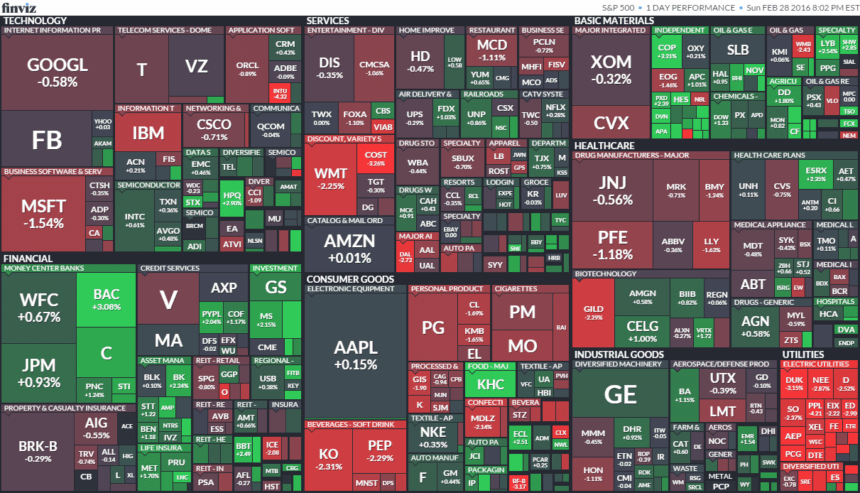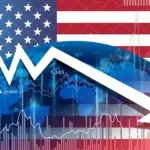American equity markets demonstrated robust performance on June 26, 2025, with major indices posting solid gains as investors embraced renewed optimism about economic stability and diminishing geopolitical risks. The session highlighted the market’s resilience amid ongoing policy uncertainties, with technology sectors leading the advance while energy lagged due to declining oil prices.
Market Performance Overview
The trading session witnessed broad-based strength across major indices, reflecting improved investor sentiment and risk appetite. The S&P 500 Index advanced 0.6%, closing within striking distance of its record high established earlier this month. At current levels, the benchmark index sits merely 0.3% below its all-time intraday peak of 6,204.17 reached on June 2, 2025.
Technology-heavy indices outperformed their value-oriented counterparts, with the Nasdaq Composite leading gains at 0.7%. This outperformance underscores continued investor enthusiasm for artificial intelligence and semiconductor companies, which have driven much of 2025’s market rally. The Dow Jones Industrial Average, while posting more modest gains, still managed a respectable 182-point advance to close at 43,271.02, representing a 0.5% increase.
Market opening dynamics revealed initial strength that sustained throughout the session, with early gains of 0.4% for the S&P 500, 0.5% for the Nasdaq, and 0.6% for the Dow. This positioning brings all major indices near their March 2025 peak levels, suggesting technical momentum remains favorable for continued upward movement.
Market Recovery Context
The current rally represents a remarkable turnaround from the challenging period experienced in April 2025, when escalating trade tensions and geopolitical instability created significant headwinds. Both the S&P 500 and Nasdaq have surged over 25% from their April lows, demonstrating the market’s ability to recover from periods of uncertainty when fundamental conditions improve.
This recovery has been underpinned by several key factors, including stronger-than-expected corporate earnings, particularly within the technology sector, and encouraging economic indicators that suggest underlying economic resilience. However, the sustainability of this advance remains contingent on resolving persistent fiscal policy questions and avoiding potential trade disruptions that could undermine investor confidence.
Economic Data Analysis
Labor market conditions continue to provide supportive evidence for the ongoing economic expansion. Initial jobless claims for the week ending June 21, 2025, declined to 230,000, falling below consensus expectations of 238,000. This improvement signals that the labor market maintains its strength despite the Federal Reserve’s tighter monetary policy stance.
The recent jobless claims data represents a positive development following mixed signals earlier in June, when claims rose to 247,000, exceeding forecasts of 236,000. That temporary increase had raised concerns about potential softening in employment conditions, but the subsequent decline has alleviated such worries and reinforced the narrative of labor market resilience.
Inflation trends have also contributed to market optimism, with the May 2025 Consumer Price Index report showing cooler-than-expected price pressures. This development has intensified speculation about potential Federal Reserve policy adjustments later in 2025, with market participants anticipating one to two interest rate reductions that could bring the federal funds rate to approximately 4% by year-end.
The forthcoming Personal Consumption Expenditures report, scheduled for release on June 27, 2025, will provide additional insight into inflation dynamics and consumer spending patterns, potentially influencing Federal Reserve deliberations and market expectations.
Geopolitical Risk Assessment
Recent geopolitical developments have contributed significantly to improved market sentiment, particularly regarding Middle Eastern tensions that had previously weighed on investor confidence. President Trump’s announcement on June 24, 2025, of a US-brokered ceasefire extension between Israel and Iran has provided temporary stability to a region that had experienced heightened tensions.
The conflict’s escalation had previously driven oil prices to $120 per barrel amid concerns about potential supply disruptions through the strategically important Strait of Hormuz. The ceasefire, while acknowledged as fragile, has remained intact with no reported military actions since the presidential announcement, leading to a dramatic reversal in energy prices.
West Texas Intermediate crude futures have declined to $64.81 per barrel, representing a 6% decrease from recent highs. This stabilization has particularly benefited sectors sensitive to energy costs, including airlines and technology companies, while reducing inflationary pressures across the broader economy.
Despite these positive developments, analysts emphasize that geopolitical risks remain elevated, with any resumption of hostilities potentially triggering significant market volatility. President Trump’s planned diplomatic engagement with Iran in early July 2025 aims to establish a more durable resolution, but markets maintain a cautious stance given the situation’s inherent instability.
Policy and Fiscal Considerations
President Trump’s proposed “One Big Beautiful Bill Act” continues to generate considerable investor attention, representing a comprehensive approach to tax reduction and economic stimulus. While the legislation has sparked optimism about potential economic growth acceleration, growing concerns about its fiscal implications are tempering enthusiasm.
Treasury Secretary Scott Bessent has emphasized the administration’s commitment to reducing annual deficits to 3% of GDP, but the proposed legislation’s current structure could potentially exacerbate federal debt levels. This tension has contributed to upward pressure on long-term interest rates, with 30-year Treasury yields approaching 5%, levels not observed since 2007.
Such elevated borrowing costs pose potential challenges for both corporate profitability and consumer spending, creating a complex dynamic where short-term stimulus benefits must be weighed against longer-term fiscal sustainability concerns.
Trade Policy Dynamics
International trade relationships remain a significant source of market uncertainty, particularly regarding US-China economic ties. While both nations agreed in May 2025 to temporarily reduce tariffs from levels exceeding 100% to more moderate rates for a 90-day period, recent developments suggest ongoing challenges in negotiations.
President Trump’s June 5, 2025, accusations that China had violated existing trade agreements caused temporary market disruption, highlighting the fragility of current arrangements. Ongoing discussions focusing on rare earth minerals trade are particularly critical, given their importance to technology manufacturing and national security considerations.
Federal Reserve Chair Jerome Powell has cautioned that tariff reimposition could trigger a “one-time jump” in price levels, with risks of more persistent inflationary pressures if trade tensions escalate. This dynamic creates additional complexity for monetary policy decisions and market valuations.
Sector Performance Analysis
The technology sector has emerged as the primary driver of recent market gains, with artificial intelligence and semiconductor companies leading the advance. Nvidia Corporation gained 4% and Broadcom Inc. advanced 2.5% during June 25 trading, reflecting continued investor enthusiasm for AI-related opportunities.
Tesla Inc. has experienced a particularly strong rebound, rising 10% over the weekly period following the successful launch of its robotaxi service in Austin, Texas, on June 12, 2025. This development has helped the company recover from earlier volatility related to tensions between CEO Elon Musk and President Trump.
Conversely, consumer discretionary stocks have faced headwinds, with Campbell Soup Company declining 2% due to weakening demand conditions. Smith & Wesson Brands Inc. experienced more severe pressure, falling 20% after reporting declining profitability metrics.
Cryptocurrency-related equities, including Coinbase Global Inc. and Riot Platforms Inc., have surged alongside bitcoin’s advance above $107,000, driven by optimism surrounding proposed cryptocurrency regulation legislation.
The energy sector has underperformed, declining 2.5% weekly as falling oil prices weighed on producer margins and investor sentiment within the industry.
Market Outlook and Risk Assessment
Analyst perspectives on future market direction remain divided, reflecting the complex interplay of supportive and challenging factors currently influencing equity valuations. Wolfe Research’s Rob Ginsberg has noted the S&P 500’s remarkable resilience despite macroeconomic and geopolitical challenges, suggesting potential for a successful test of record-high levels.
However, Barclays’ Venu Krishna has warned that Middle Eastern tensions could rapidly spark market volatility, particularly given increased equity exposure among volatility control funds, which have elevated their allocations to 45% from April lows. This positioning creates potential for sharp market reversals should risk sentiment deteriorate.
A recent Bank of America fund manager survey revealed growing preference for international equities over US stocks for the next five-year period, citing concerns about potential tariff impacts and geopolitical risks. This shift in sentiment suggests that while near-term momentum remains positive, longer-term structural challenges may require careful navigation.
The June 26, 2025, trading session exemplified the current market’s ability to advance despite persistent uncertainties, driven by improved economic data, stabilized geopolitical conditions, and continued technology sector strength. However, the path forward will likely depend on the successful resolution of fiscal policy questions, the maintenance of geopolitical stability, and the avoidance of trade policy disruptions that could undermine current optimism.
Investors should remain cognizant of the various risk factors that could potentially disrupt the current positive trajectory while acknowledging the market’s demonstrated resilience and underlying economic fundamentals that continue to support equity valuations near record levels.








